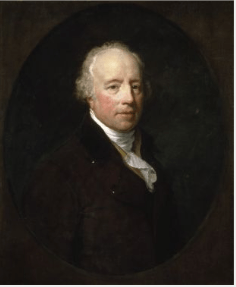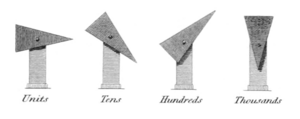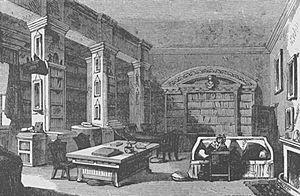Richard Lovell Edgeworth facts for kids
Quick facts for kids
Richard Lovell Edgeworth
|
|
|---|---|

c. 1800
|
|
| Born | 31 May 1744 Bath, England
|
| Died | 13 June 1817 (aged 73) Edgeworthstown, County Longford, Ireland
|
| Alma mater | Corpus Christi College, Oxford; Trinity College, Dublin |
| Spouse(s) |
|
| Children | 22, including
|

Richard Lovell Edgeworth (31 May 1744 – 13 June 1817) was an Anglo-Irish politician, writer and inventor. He had 22 children.
Biography
Edgeworth was born in Pierrepont Street, Bath, England, son of Richard Edgeworth senior, and great-grandson of Sir Salathiel Lovell through his mother, Jane Lovell, granddaughter of Sir Salathiel. The Edgeworth family came to Ireland in the 1580s. Richard was descended from Francis Edgeworth, appointed joint Clerk of the Crown and Hanaper in 1606, who inherited a fortune from his brother Edward Edgeworth, Bishop of Down and Connor.
A Trinity College, Dublin and Corpus Christi College, Oxford alumnus, he is credited for creating, among other inventions, a machine to measure the size of a plot of land. He also made strides in developing educational methods. He anticipated the caterpillar track with an invention that he played around with for forty years but that he never successfully developed. He described it as a "cart that carries its own road".
He was married four times, including to Honora Sneyd and to Frances Beaufort, older sister of Francis Beaufort of the Royal Navy. Edgeworth and Francis Beaufort installed a semaphore line for Ireland. Edgeworth was a member of the Lunar Society, an informal organisation of Birmingham-based industrialists, scientists and intellectuals that met regularly to discuss and share ideas relating to their fields of interest. Other members included Erasmus Darwin, Josiah Wedgwood and James Watt.
Richard Edgeworth and his family lived in Ireland at his estate at Edgeworthstown, County Longford, where he reclaimed bogs and improved roads. He sat in Grattan's Parliament for St Johnstown (County Longford) from 1798 until the Act of Union in 1801, and advocated Catholic Emancipation and parliamentary reform. He was a founder-member of the Royal Irish Academy. He died in Edgeworthstown on 13 June 1817.
Family
He was the father of 22 children by his four wives
- Anna Maria Elers (1743–1773), of whom five children
- Richard Edgeworth (1765–1796), m. Elizabeth Knight 1788. Died in America
- Lovell Edgeworth (1766–1766)
- Maria Edgeworth (1768–1849) the novelist
- Emmeline Edgeworth (1770–1817), married Dr. John King of Bristol, October 1802
- Anna Maria Edgeworth (1773–1824), married Dr. Thomas Beddoes 1794.
- Honora Sneyd (1751 – 1 May 1780), of whom two children
- Honora Edgeworth (1774–1790)
- Lovell Edgeworth (1775–1842), who inherited the property
- Elizabeth Sneyd (1753–1797), sister of Honora Sneyd, of whom five sons and four daughters
- Elizabeth Edgeworth (1781–1805)
- Henry Edgeworth (1782–1813)
- Charlotte Edgeworth (1783–1807)
- Sophia Edgeworth (1784–1784)
- Charles Sneyd Edgeworth (1786–1864) m. Henrica Broadhurst 1813, succeeded his brother Lovell Edgeworth
- William Edgeworth (1788–1790)
- Thomas Day Edgeworth (1789–1792)
- Honora Edgeworth (1792–1858), married Francis Beaufort (his brother-in-law from his fourth marriage) in 1838
- William Edgeworth (1794–1829), engineer.
- Frances Ann Beaufort (1769–1865), botanical artist, daughter of Daniel Augustus Beaufort and Mary Waller, of whom six children
- Frances Maria Edgeworth (1799–1848) m. Lestock Wilson 1829
- Harriet Edgeworth (1801–1889) m. Richard Butler 1826
- Sophia Edgeworth (1803–1836) m. Barry Fox 1824
- Lucy Jane (1805–1897), married the Irish astronomer Thomas Romney Robinson 1843.
- Francis Beaufort Edgeworth (1809–1846), Mentioned in Thomas Carlyle's Life of Sterling. Married Rosa Florentina Eroles of Spain.
- Michael Pakenham Edgeworth (1812–1881), m. Christina Macpherson 1846, botanist.



